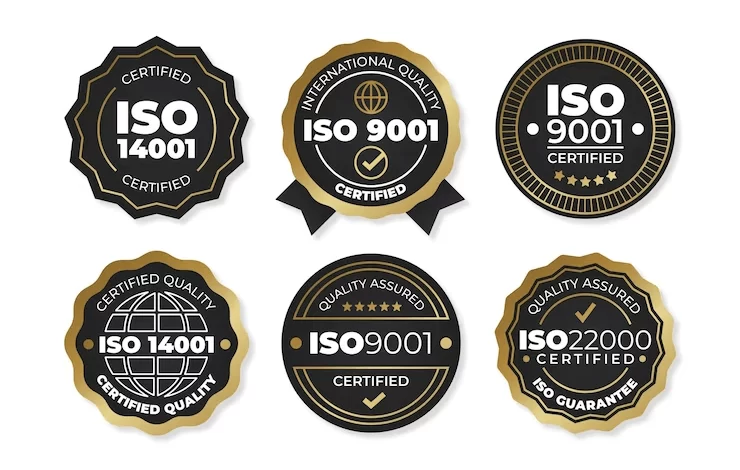The ISO 9001 Standard’s Plan-Do-Check-Act Cycle

What is the best method to interpret the ISO 9001 Quality Management System standards to improve the interoperability of the various processes in your system? Applying a Plan-Do-Check-Act methodology can enhance each process separately and improve the system as a whole. You can direct the improvement of the several processes towards a single, more important goal for the business by viewing them as being connected in a single, broad cycle of development.
What Is The Origin Of Plan-Do-Check-Act?
Aegis.qa explains the Plan-Do-Check-Act, or “PDCA,” is a cycle created by Edward Deming and popularised by Walter Shewhart, two of the founding fathers of contemporary quality control. This idea is a cycle for bringing about change that, if used consistently, would result in continuous improvements to the process it was applied. Consider choosing a wireless carrier as an example. You plan to experience no dropped calls; the Do phase is when you start utilising the phone services; the Check phase is when you monitor the real performance and experience a few dropped calls; and the Act phase is when you decide what to do. For example- Accept the amount of dropped calls, contact the provider to attempt and fix the issue, or switch wireless carriers, for instance.
This is a continual improvement approach rather than a one-time quick repair method, and it is used in conjunction with the ISO 9001 standard for this reason. The primary objective of the ISO 9001 standard is the continual enhancement of the Quality Management System.
The ISO 9001 Standard Specifications explain Plan-Do-Check-Act in further detail.
The description of the Process Approach and its significance for putting into practice a Quality Management System that complies with ISO 9001 standards may be found in the introduction to the standard.
There is also a notation mentioning the application of the “Plan-Do-Check-Act” paradigm to all procedures. After that, a graphic is displayed illustrating how the standard criteria fit into a PDCA cycle. The ISO 9001 clause numbers in brackets explain how the cycle of improvement functions within the QMS in the following sections.
Plan:
Planning is one of the most important aspects of the QMS and begins with an awareness of the organisation’s context and the needs of those who want to participate in the QMS (4.1 & 4.2). From there, the scope of the QMS and its procedures are defined (4.3 & 4.4).
The commitment of the company’s leadership to move the organisation towards a customer-focused mindset is demonstrated by defining organisational roles and duties and adopting a quality plan to give the whole QMS a focus (5.1, 5.2, & 5.3). At the next level of planning, risks and opportunities related to the QMS are identified and addressed, along with planning for quality goals and modifications to enable ongoing improvement (6.1, 6.2, & 6.3). The last stage of planning is finding and putting in place the support system that allows you to act out your ideas. Resources (7.1), identifying competence (7.2), awareness (7.3), communication (7.4), and setting up mechanisms for the production and management of recorded information (7.5) are included in this.
Do:
Without implementation, planning is pointless. It is necessary to identify controls for QMS operations, as well as to identify product or service requirements (8.2), establish designs (8.3), and implement controls on processes, goods, and services that are offered by third parties (8.4). Production of the good or service must be strictly controlled when it is released (8.5 & 8.6), and any non-conforming goods or services must be dealt with (8.7). In other words, it is necessary to carry out the activities of producing and offering goods or services to customers.
Check:
The standard includes several standards for checking the Quality Management system’s processes to ensure they operate as intended. To ensure the products or services are meeting standards, the methods being employed are sufficient and effective, and the customers’ needs are being met (9.1), it is necessary to monitor, measure, analyse, and evaluate the products or services. The most important method for assessing the system’s effectiveness is an internal audit (9.2) of the processes. The Management Reviewing process (9.3) is also included, which evaluates all the monitored data and makes modifications and strategies to deal with the problems.
Act:
In this context, acting refers to taking the necessary steps to address any problems identified during the check step. The main heading for these action stages (10.1) is an improvement (10.1 & 10.3), with the first step in improving the system being the activities of resolving irregularity and Corrective Actions (10.2) aimed at eliminating the causes of present or potential nonconformities.
Plan:
As previously said, this cycle recurs to ensure that plans are in place for subsequent development. Internal audit findings from the “Check” phase may have prompted remedial actions from the “Act” phase, and these, in turn, will necessitate planning adjustments to satisfy the new criteria in the next “Do” phase. The Management Review considers the findings of the Internal Audit, the corrective actions taken, and the resource plans for any modifications. Resources are evaluated and changed according to the demands of the business. The cycle then transitions into yet another round of doing.
A good example would be if your business decided to modify a process to reduce scrap by 5%; the adjustments were made, the process was run, and a review of the process revealed that you had reduced the quantity of waste by 3%. You took action to make other changes to improve. The next planning for this procedure might involve making further adjustments and lowering the scrap by an additional 4% the following year.
Focus Your QMS On Improvement By Using PDCA.
The objective of a QMS is to work towards improvement for the business because improvement is the only way for a company to compete in markets that are becoming increasingly cutthroat. Utilising the PDCA cycle will enable you to direct the QMS’s procedures and goals towards the intended improvement, saving you time and money that can be put towards making even more advancements. The advancement and permanence of the business are more certain when improvement is the QMS’s primary objective.



